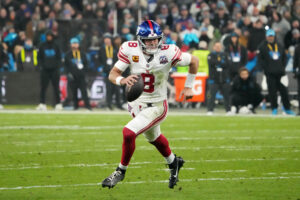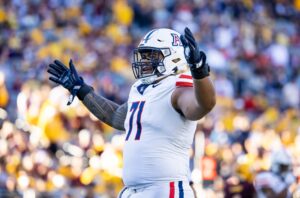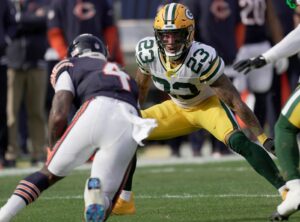This year’s Seattle Seahawks draft produced many mixed results. While several talented players were added to the roster, some opportunities were missed as well. Particularly confusing were the number of defensive players drafted for a team that already excels in that area. It’s not that the team could not use help on defense, it’s simply that they need more help on offense.
Making The Grade: Examining Seattle Seahawks Draft Performance
To their credit, the decision to trade back for more selections was a good move. The additional draft picks essentially required no sacrifice on their behalf. The team added several key players while still signing the talent they were seeking.
Also prudent was the choice of Michigan State defensive tackle Malik McDowell with their first overall selection. Many scouts believe McDowell could easily have been a top ten draft pick, except that the defensive line was not a top priority for most teams this year. Granted, the defensive line was not a top priority for the Seahawks, either. Seattle already possesses one of the best defensive lines in the league, with Pro Bowl defensive ends Michael Bennett and Cliff Avril. Far more important for Seattle is repairing its hobbled offensive line, which struggled mightily last season. In this case, Seattle opted to sign the best available player, rather than first address its problems at the offensive line position.
This choice is understandable, especially since they added a solid offensive linemen with their second overall selection, Louisiana State center Ethan Pocic. Pocic will be a welcome addition to a unit that also added talented linemen Luke Joeckel and Oday Aboushi during the free agency period.
Good Decisions And Missed Opportunities
Much more puzzling is the flurry of defensive players, particularly defensive backs, selected in the following rounds. The Seahawks already possess the best secondary in the game, and it is unlikely these new players will see much playing time in the near future. The team will eventually need replacements for its veteran defensive backs, but they will also need help offensively in the long term as well. Seattle’s offense struggled greatly last year, while the defense carried the team most of the time. It makes much more sense to provide franchise quarterback Russell Wilson with the weapons he needs at wide receiver, and the protection he needs on the offensive line.
Upgrading The Artillery And Fortifying The Trenches
Four marquis offensive linemen were available in this year’s draft, two of whom remained undrafted even after the Seahawks traded back. Alabama tackle Cam Robinson and Western Kentucky guard Forrest Lamp were rated significantly higher than the other linemen in the class. Selecting one of these players with their first choice may have been the best option since the offensive line is their biggest need. As it stands now, a question mark still remains over this facet of the game.
This year’s draft class saw a shortage of premiere wide receivers. Southern Cal receiver JuJu Smith-Schuster seemed like a good fit given his west coast heritage. Projected as a mid-to-late second round choice, he may have been a bit of a reach with their first overall pick. Trading back, then trading up again to acquire him with their second pick, would have required a bit of maneuvering, but may have been possible. Since multiple receivers and frequent substitutions are necessary, the Seahawks could have used additional help at that position.
Overall, the Seahawks need to make some minor adjustments on offense, while keeping to their game plan on defense. Most importantly, they need to fix their problems on the offensive line. If the Seahawks are unable to improve offensively, they could be in danger of missing the playoffs. Adding extra firepower, however, could very well propel them to Super Bowl glory once again.
Main Photo:






